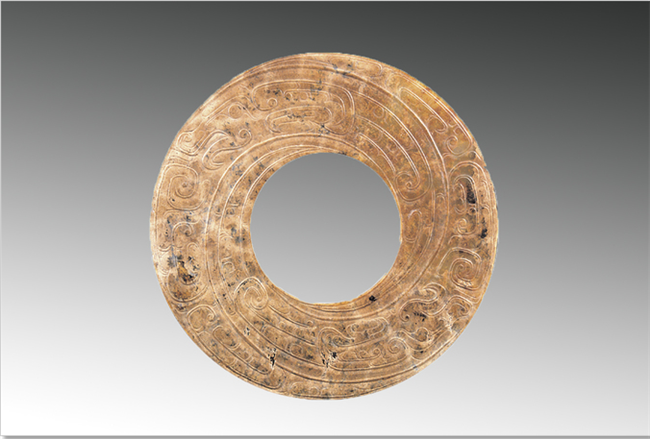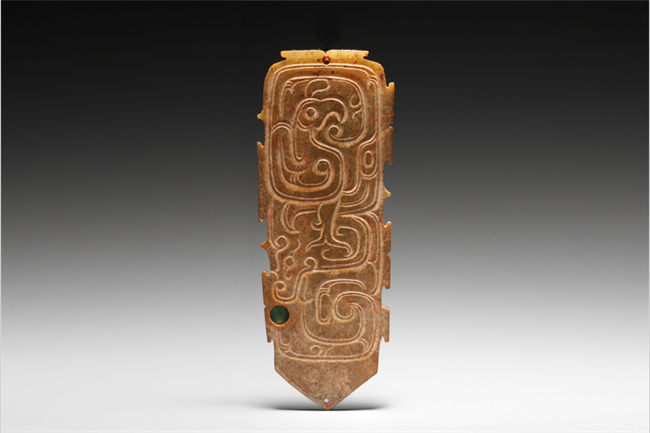Jade wares were extremely popular in ancient China because of their mysterious, elegant and translucent natures. Jade was endowed with many symbolic meanings by ancient Chinese people, like sublimity, spiritualism, nobility, chasteness and beauty as well as personalized and transnatural powers. A raft of jade wares has been unearthed in Shanxi. For instance the jade cong discovered in Taosi village was identified as a ceremonial item in rituals to offer sacrifices to the heaven, earth, gods and other spiritual beings. The god-faced jade qi, an axe-like weapon, discovered in Licheng, was a symbol of power. A great number of jade wares, which were identified as items of the Shang and Zhou dynasties, were discovered in the Marquis Jin's family tombs. The Jin tomb's jade wares feature excellent craftsmanship and exquisite patterns, representing a high-level in the history of jade. The jade ornaments unearthed in the Zhao's family tombs in Taiyuan were representative of the exquisite style of Eastern Zhou Dynasty. The jade production reached its peak during the Ming and Qing dynasties with a lot of delicately engraved and complicated-patterned items produced. The Ming Dynasty white jade sitting statue of Dharma and Qing Dynasty white jade bowl with gem inlays all represent the high level of craftsmanship of the times.

Jade huan, Western Zhou Dynasty
With an outer diameter of 15.6 cm and bore diameter of 6.8, the jade huan, or jade ring, was discovered in 1993 at the Marquis Jin's family tombs in Beizhao village in Quwo county. The two surfaces of the rings are decorated with the same patterns of two dragons. Cloud patterns were engraved between the two dragons, with smooth lines. The occupant of the tomb was the wife of Marquis Mu of the Jin state.

Jade gui with dragon and phoenix patterns
Length:10.3 cm, width 3.8 cm
The jade gui, or jade plate, was discovered in 1992 at the No 31 tomb of the Marquis Jin's family tomb in Beizhao village, Quwo county. The jade gui was placed on the stomach of the tomb occupant. Both surfaces of the item were decorated with the same patterns of dragon and phoenix. With a crown on its head, the phoenix features a curved beak, round eyes, spreading wings and coiled tail feathers. The phoenix sets its claws on the dragon's body. The dragon features a coiled body and curved nose. A hole is near the mouth of the dragon, which is filled with a calaite stone. The lines of the patterns are smooth and delicate.
